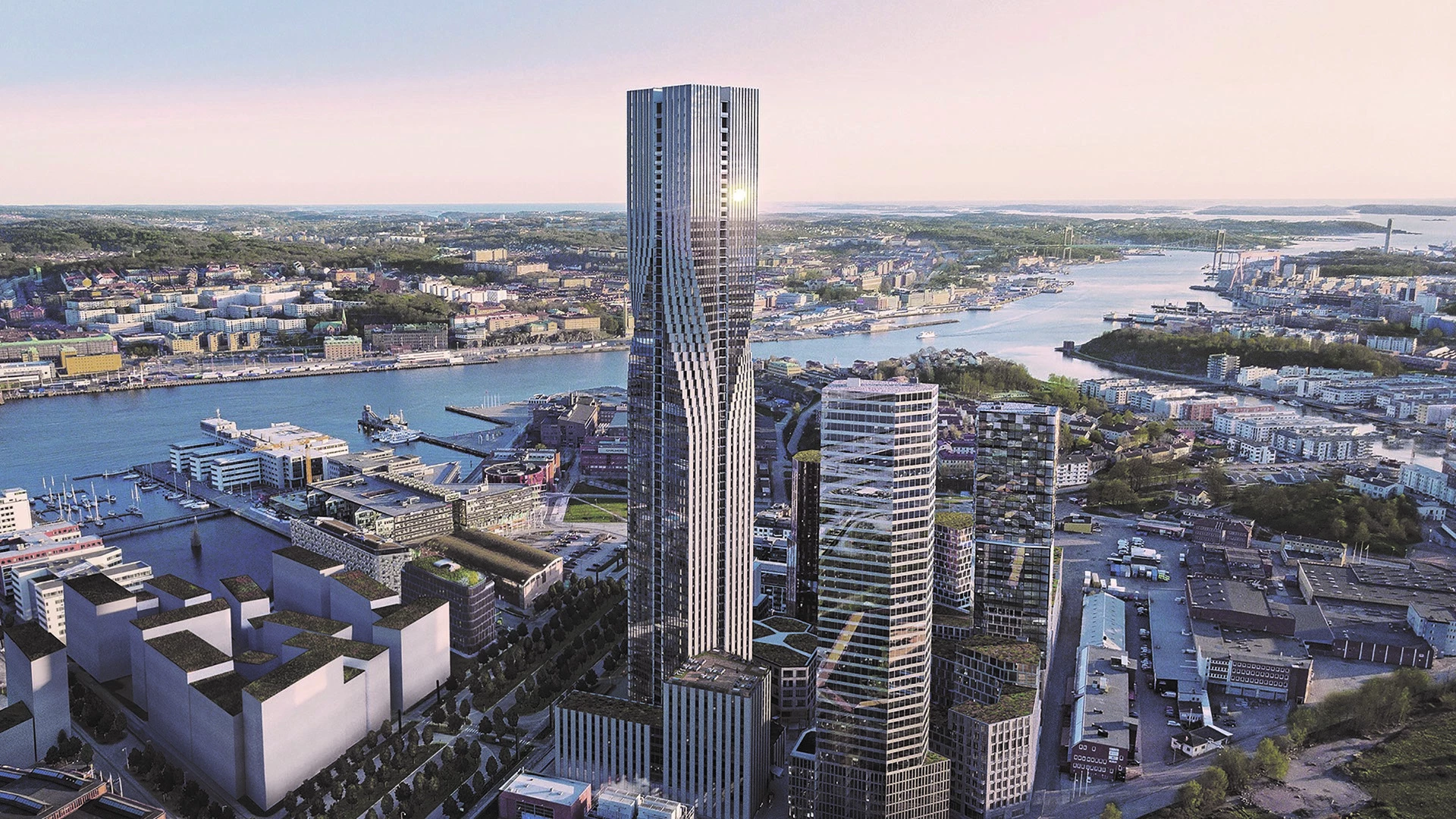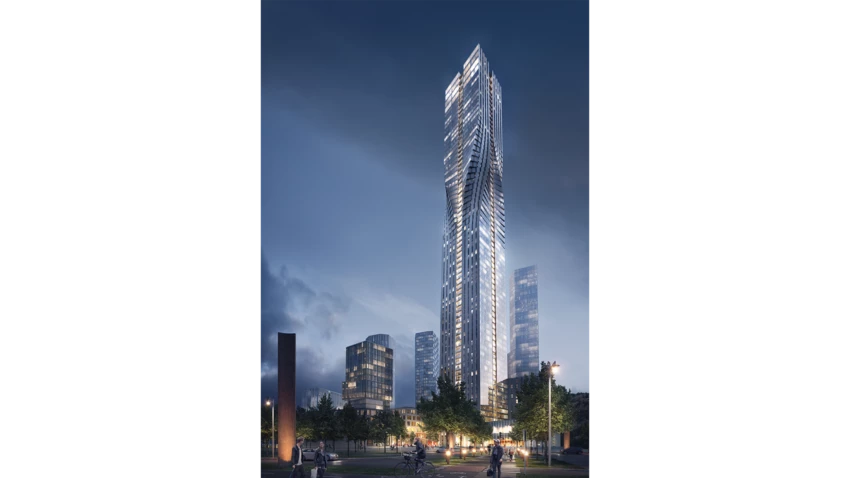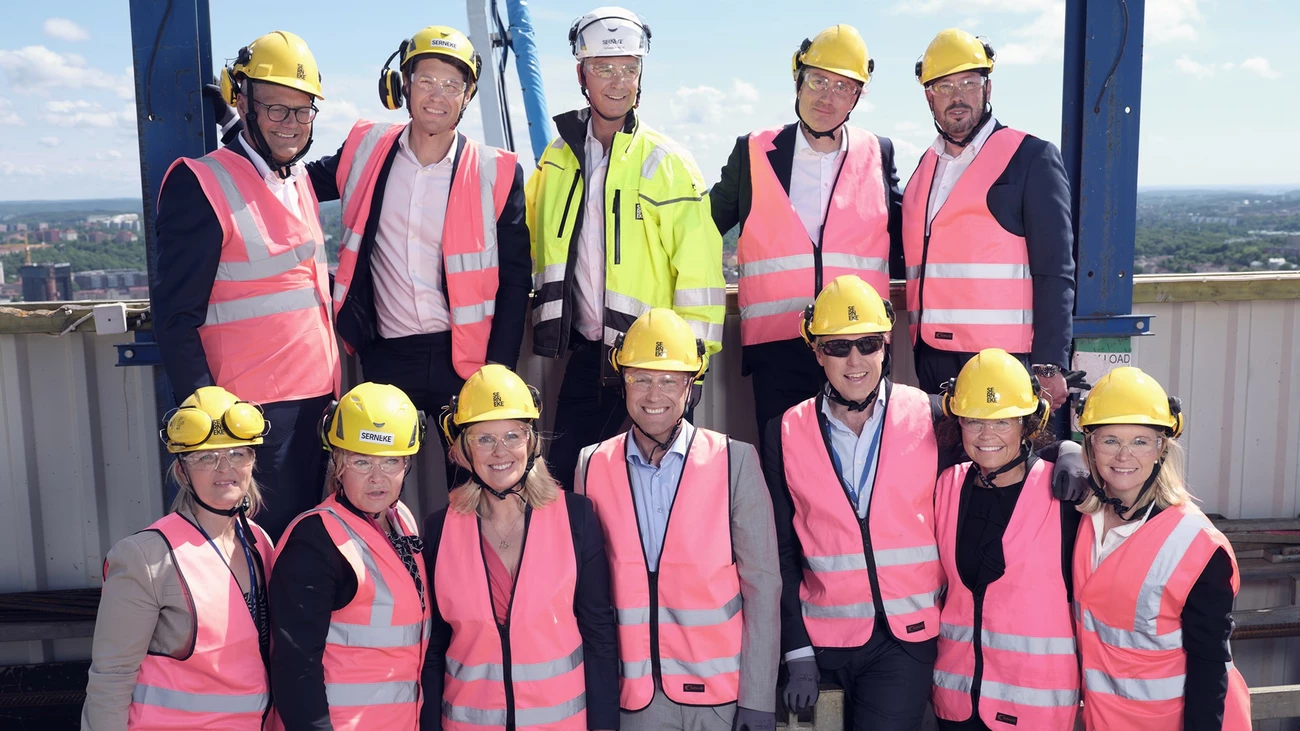
Innovative technology cluster growing by one floor per week
Michael Berglin, CEO of Serneke Group, and Erik Selin, CEO of Balder, are our guides on the 2.5 hour tour of the iconic building. According to them, a workforce of around 500 people are working in two shifts and approximately one floor per week is added to the tower. At the time of our visit, they are working on the twist – the part where the tower turns. Here, the corners of the building are shifted approximately 60 centimetres per floor, creating a waist that rotates about a quarter of a turn.
The construction is now more than half-way to its final height of 245 meters and 73 floors. When completed, the tower will be the tallest building in the Nordics, and include both housing, hotels and commercial premises, where innovation is at the core of every detail The apartments – ranging from studios to penthouses of more than 300 square meters and three floors – will be some of the most exclusive and unique homes in the Nordic countries. The residents will for example have access to service and facilities through the hotel that will also be housed in the building.
“Nordea has played a crucial role in making Karlatornet a reality. Nordea put us in touch with Serneke which led to the three of us joining forces, and we have been working together ever since. It is an incredibly interesting project and I feel that its completion is really important for Gothenburg,” says Erik Selin, CEO of Fastighets AB Balder.





